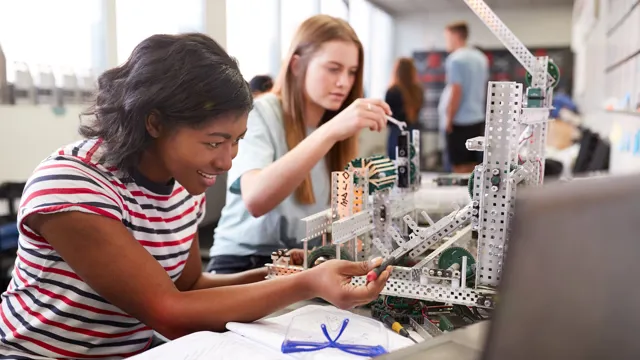Teaching high school students to understand and enjoy the sciences can challenge any educator. This is especially true of subjects like engineering, which rely so heavily on movement and physicality that a lecture is only sometimes interesting. After all, part of why engineering is so exciting is that it has direct application to the world around us.
Hands-on activities are a great way to help students supplement their reading and better understand (and maybe even grow to love) the engineering world. But what are the best ways to bring these activities into the classroom?
These five engineering projects for high school students are fun, educational, and flexible to meet your classroom style. Give your students these prompts, ask them to think like real-life engineers, and enjoy the brilliant ideas they create!
Increase access to drinking water
This is a great project to give students a beginning understanding of civil, chemical, and environmental engineering. They must consider everything from testing for pollutants to developing environmentally sound solutions.
You can begin with in-classroom activities, like having them test water samples to identify pollutants. Once you've walked them through these steps, they can ideate in groups about how to design a water filtration system that will help sanitize the water to become suitable for drinking. They will ultimately learn how civil, chemical, and environmental engineers work together to solve environmental problems and help increase access to clean water worldwide.
Through this project, students will learn about the science behind drinking water and the issues affecting cities across the world and the United States in accessing clean water.
Protect a coastal town from shore erosion
In this project, students use their STEM skills to calculate wave energy, decide what material will best protect a shoreline, and build a sea wall to protect a coastal town from shore erosion and flooding. They can even work to calculate the cost of their chosen material plus labor and decipher how much of that material they will need to build an effective sea wall.
During a project like this, students will also have to ask themselves whether humans should be preventing soil erosion and if it’s possible to stop waves from eventually eroding various shorelines.
Build an eco-friendly earthquake-resistant structure
To begin a project like this, students must choose a city to build their structure, calculating how strong an earthquake might be in the city based on projections and past disasters. They will need to find materials that effectively protect the building from an earthquake and are environmentally friendly.
Students of all ages can engage in this type of project, but for high school students, you can increase the challenge by asking them to build a structure that is not only earthquake-resistant but also eco-friendly.
They will then have to design their structure to withstand the force of an earthquake. They may likely build a model version of their structure and then see how well it stands using an earthquake simulation machine, which could be a fun class activity.
Solve a city’s specific challenges with urban design
This project will give high school students a taste of civil engineering and urban planning. To add to the challenge of the project, ask students to choose a city to study with their group or even set up field trips around the city where your school is located.
Whichever city students choose will have its particular challenges, whether they relate to public transportation, eroding bridges, or the need for more reliable infrastructure. Perhaps some cities’ most significant problem is the lack of high-density residencies for a growing population.
Once students identify a problem they would like to help solve, they will create their urban planning solution by designing plans for projects like public transportation, new bridges, high-density living environments, etc. They will get a sense of the cost of urban development and how to start approaching urban-specific problems that arise worldwide.
Build a recycling sorting machine
Building something simple but impactful, like a machine that sorts recycling, is always a strong choice for a project that ends in a working model. Students can venture into magnetism and other engineering techniques to find efficient and effective ways to sort recyclable materials.
This project effectively teaches aspects of mechanical engineering and shows how engineering can help solve major world issues like global warming through better recycling practices.
Depending on the type of lesson you want to teach, students can create a makeshift version of their recycling sorting machine at home through virtual schooling, or they can work together at school to build a more complicated recycling machine or robot.
_____
Whichever type of high school engineering project you choose, your students will undoubtedly appreciate the opportunity to learn about engineering design through hands-on work. You can avoid some of the common complaints that I will never use and teach valuable, lifelong skills.
